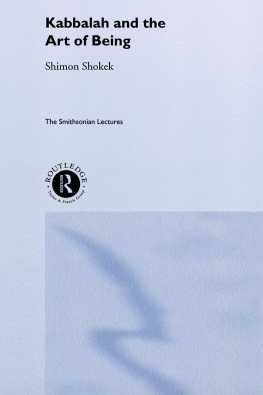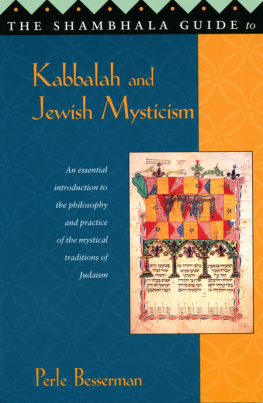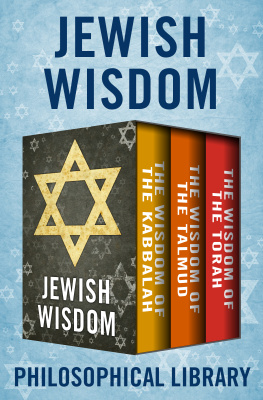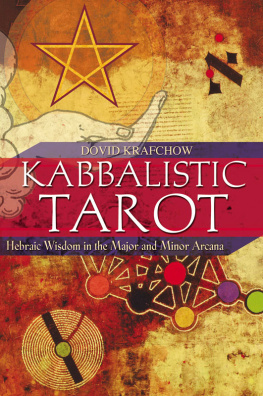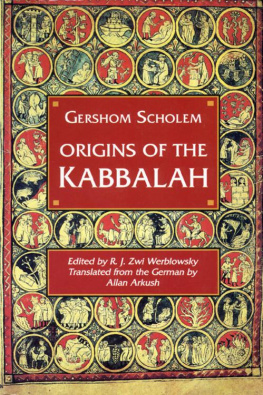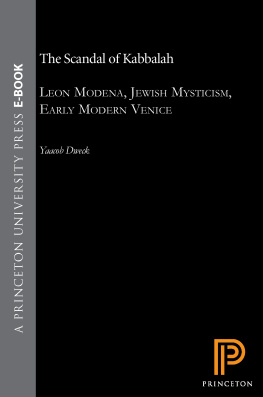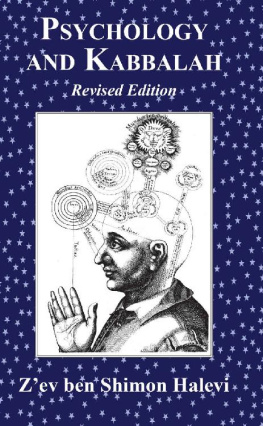Kabbalah and the Art of Being
Professor Shimon Shokek, through his new approach to Kabbalah, suggests that the central ingredient in the spiritual teachings of Jewish mysticism is to be found in the Kabbalistic theme of Creation. Professor Shokek argues that Kabbalah is not just a religious phenomenon or an esoteric theology but a practical wisdom for living, creativity and well-being. Thus, he introduces Kabbalah as a spiritual Jewish way of living, an Art of Being.
The book skilfully reveals the core questions that emerge from the wisdom of the Jewish sages. It considers in depth the Kabbalistic meaning of Creation, mysticism, communion with God, language and speech, the human soul, messianism and repentance. Professor Shokek asks:
- What is the Kabbalistic perception of existence and being?
- How and why have Kabbalistic ideas been integrated into the lives of the Jewish people, shaping their fate and identity?
- What is the nature of Kabbalah and the truth behind it?
- Can we understand Kabbalah and Jewish mysticism in the light of world philosophy and contemporary psychological theories?
At a time when the study of Kabbalah and Jewish mysticism is attracting a growing number of students, Kabbalah and the Art of Being opens an accessible and lively avenue of debate, for both the academic student and the interested general reader.
Shimon Shokek received his PhD from the Department of Jewish Philosophy and Kabbalah at the Hebrew University of Jerusalem, where he taught for several years. He is currently Professor of Jewish Philosophy and Mysticism at Baltimore Hebrew University, and has lectured at the Smithsonian Institution, Washington, DC. He is the author of Jewish Ethics and Jewish Mysticism in Sefer Ha-Yashar, 1991 (English), and Repentance in Jewish Ethics, Philosophy, and Mysticism, 1995 (Hebrew).
Kabbalah and the Art of Being
The Smithsonian Lectures
Shimon Shokek
Edited by Michael Leavitt
First published 2001
by Routledge
11 New Fetter Lane, London EC4P 4EE
Simultaneously published in the USA and Canada
by Routledge
29 West 35th Street, New York, NY 10001
Routledge is an imprint of the Taylor & Francis Group
2001 Shimon Shokek
Typeset in Garamond by
Prepress Projects Ltd, Perth, Scotland
All rights reserved. No part of this book may be reprinted or reproduced or utilised in any form or by any electronic, mechanical, or other means, now known or hereafter invented, including photocopying and recording, or in any information storage or retrieval system, without permission in writing from the publishers.
British Library Cataloguing in Publication Data
A catalogue record for this book is available from the British Library
Library of Congress Cataloging in Publication Data
Shokek, Shimon.
Kabbalah and the art of being: the Smithsonian lectures / Shimon Shokek; editor, Michael Leavitt.
p. cm.
Lectures originally presented at the Smithsonian Institution.
Includes bibliographical references and index.
1. Cabala History. 2. Creation. 3. Spiritual life Judaism.
I. Leavitt, Michael. II. Title.
BM526.S55 2001
296. 1'6dc21 01-034484
ISBN 0-415-24044-1 (hbk) 0-4I5-24045-X (pbk)
This book is dedicated with love to my family,
Dalia, Ori, and Tali, and to my friends
Leo Lubow and Mark Komrad
Contents
All the illustrations are prints of original artworks by Smadar Livne.
This book is based on a series of lectures and seminars that I delivered at the Smithsonian Institute in Washington, DC, during 19948. Thus, the text retains the style of an oral discourse to make it easy to read and understand. The eight chapters in this volume can be read either as independent essays or as interrelated lectures. These lectures reflect different aspects of the central theme of this book: creation and being in Jewish spirituality. On the one hand, the reader who is interested in learning mainly about the Jewish concept of waiting for the Messiah, for example, is invited to study the seventh chapter, whereas one who is interested in learning about repentance is welcome to explore the eighth chapter. On the other hand, substantial literary and theological ingredients bind together the entire book: first, all eight chapters focus on the affinity between the Creator and His Creation, and, second, they all introduce integrated building blocks in Jewish spirituality that when studied concurrently will reveal the inner structure of the Jewish mystical mind.
The literary point of departure of this book and its philosophical model was not intended to satisfy a rigid academic taste. This is not because the book lacks an academic framework. In fact, its scholarly framework reflects the best current academic research, and its attention to cultural and historical context is sound. At the same time, the book proposes to open a new window for those interested in Jewish spirituality. It uses a new lens that renders its subject more comprehensible and less complicated.
Here readers will find an invitation to inquire "why things are the way they are," but at the same time they will be required to take long leaps between themes and across historical periods. This ride into the mystical texts of Kabbalah, on the Jewish road of hyper-reality, uses as its vehicle the inspiring myth that the Jewish mystics have created regarding the Creation of the world. I call it in the book the Kabbalistic creation myth. I explore it in diverse classic texts of Kabbalah, and I define it as the existential and psychological foundation of Jewish spirituality. Whereas the existential dimension of this myth is shown by the Kabbalists to be divine oneness, an extension of the One into the many, its psychological dimension is revealed as the human soul's desire to be reunited with this unity. The abundant implications of this formula bind the book's chapters together from the first to the last.
Ironically, despite the fact that many researchers in Jewish studies are immersed in scholasticism and the debates in current literary theories phenomenology, ontology, terminology, and methodology they are often chained by the ordinary methods and procedures of the academic world. They are haunted by the rigid historical context, by heritage, ancestry, and culture, to the extent that they may even confuse significance with insignificance. The academic framework thus becomes the core, while the core becomes bland. In this book, although the philosophical method preserves the boundaries of scholarship, the core is not hidden under piles of footnotes or lexical points. For this book is aimed at those who are willing to learn with an open mind and an unchained intellect. My intent is to present as its core the wisdom of Kabbalah as a map illustrating the intersections of human thoughts, feelings, and actions; that is, as an esoteric doctrine and an intellectual philosophy that is an art of being. This, I believe, has always been the purpose of the Jewish sages who composed the treasury of masterpieces of Jewish mysticism and Kabbalah.
The process of thinking what we call "intellectualizing" can become a flight into abstractions that have no meaningful, experienced relevance. This book looks at the central themes of Kabbalah as accessible components for practical living. It proposes that the spiritual, psychological, and existential modules of Kabbalah have not only shaped the essence of Jewish identity, but also sustained the Jewish people through centuries of exile. The book does not suggest that the reader become a Kabbalist, but it definitely emphasizes that Kabbalah, as the major spiritual force of Judaism, has played a central role in the collective experience of the Jewish people. Hence, the book examines some of the focal themes of Kabbalah not merely as themes of a mysterious tradition, but rather as efficient, pragmatic, and even sacred themes of life, i.e. as an inseparable part of the Jewish ritual, ceremony, and liturgy.

